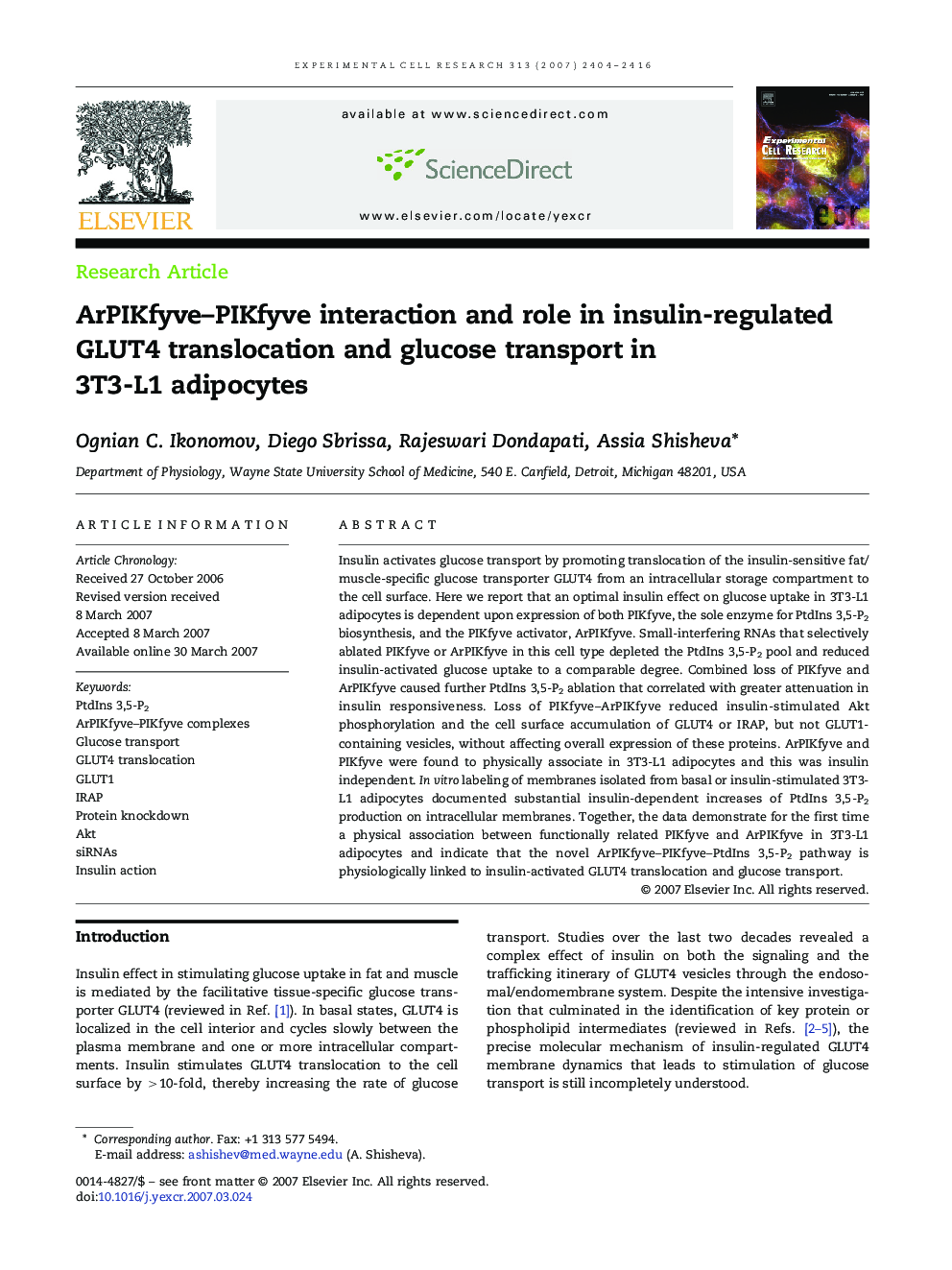| Article ID | Journal | Published Year | Pages | File Type |
|---|---|---|---|---|
| 2131829 | Experimental Cell Research | 2007 | 13 Pages |
Insulin activates glucose transport by promoting translocation of the insulin-sensitive fat/muscle-specific glucose transporter GLUT4 from an intracellular storage compartment to the cell surface. Here we report that an optimal insulin effect on glucose uptake in 3T3-L1 adipocytes is dependent upon expression of both PIKfyve, the sole enzyme for PtdIns 3,5-P2 biosynthesis, and the PIKfyve activator, ArPIKfyve. Small-interfering RNAs that selectively ablated PIKfyve or ArPIKfyve in this cell type depleted the PtdIns 3,5-P2 pool and reduced insulin-activated glucose uptake to a comparable degree. Combined loss of PIKfyve and ArPIKfyve caused further PtdIns 3,5-P2 ablation that correlated with greater attenuation in insulin responsiveness. Loss of PIKfyve–ArPIKfyve reduced insulin-stimulated Akt phosphorylation and the cell surface accumulation of GLUT4 or IRAP, but not GLUT1-containing vesicles, without affecting overall expression of these proteins. ArPIKfyve and PIKfyve were found to physically associate in 3T3-L1 adipocytes and this was insulin independent. In vitro labeling of membranes isolated from basal or insulin-stimulated 3T3-L1 adipocytes documented substantial insulin-dependent increases of PtdIns 3,5-P2 production on intracellular membranes. Together, the data demonstrate for the first time a physical association between functionally related PIKfyve and ArPIKfyve in 3T3-L1 adipocytes and indicate that the novel ArPIKfyve–PIKfyve–PtdIns 3,5-P2 pathway is physiologically linked to insulin-activated GLUT4 translocation and glucose transport.
